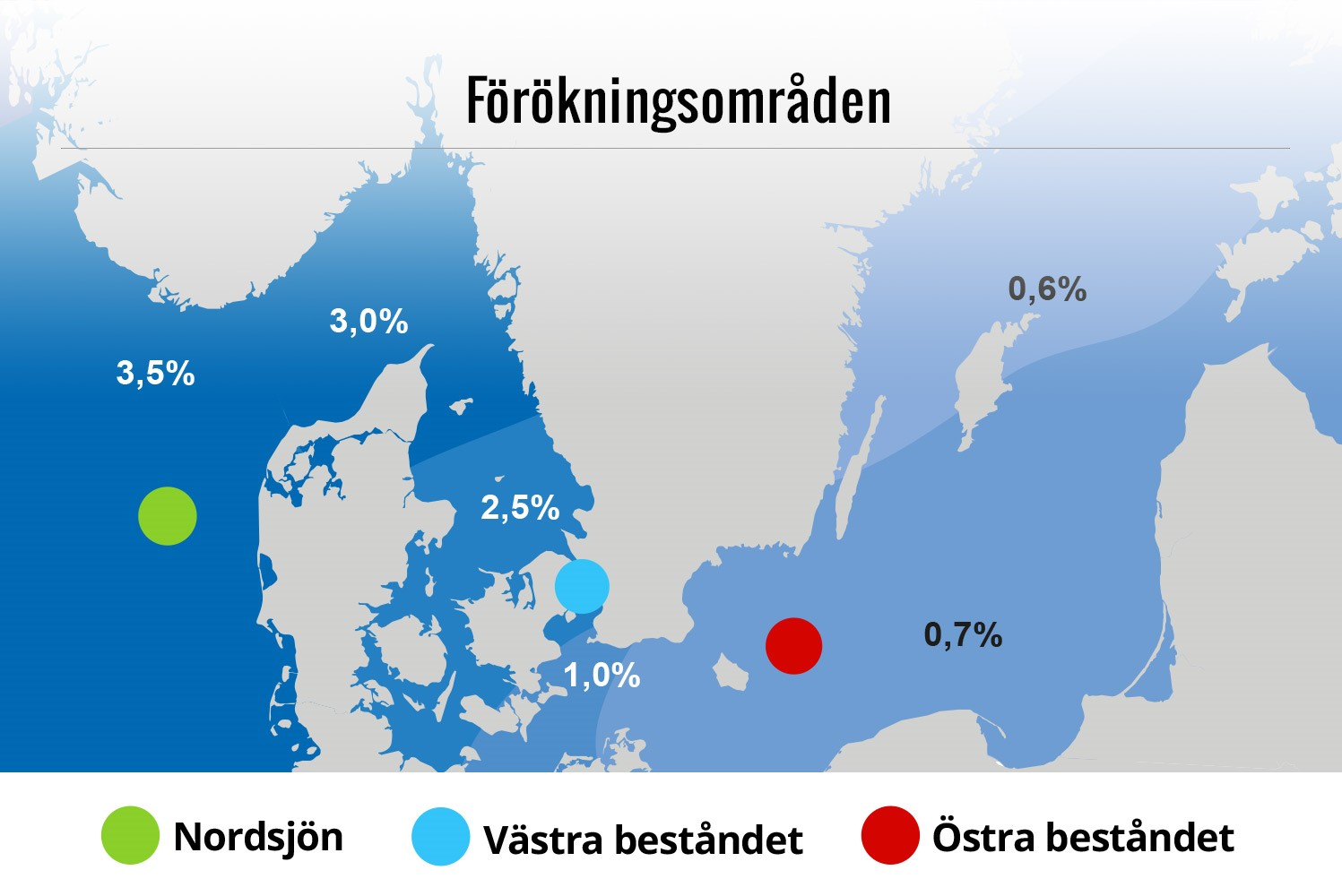Search press releases
Fisheries Brief No. 3: The Baltic Sea cod – a unique and isolated species
A distinguishing feature of the Baltic Sea’s environment is the presence of fewer species than are found in other marine areas. The Baltic Sea is sensitive to changes due to this lack of species diversity, as crucial ecosystem functions are maintained by a limited number of species.
The Baltic Sea was formerly protected due to its size, but is now undergoing changes that affect most of its marine organisms. Humans are now impacting the sea’s environment and ecosystem on all levels. Text in illustration:
Text in illustration:
Reproduction areas
Green - North Sea, Blue - Western stock, Red - Eastern stock
There are two Baltic Sea cod stocks: the western and the eastern. The eastern stock is significantly larger than the western and is distributed over a larger geographic area.
Cod are located along the entire coast of Sweden. It is now known that there are three genetically unique cod stocks: 1. eastern Baltic, 2. western Baltic including Öresund, Kattegatt and eastern Skagerrak, and 3. North Sea including western Skagerrak. As a response to the unique conditions in each sea area, these cod stocks have been undergoing an evolutionary adaptation for many years.
The Baltic’s eastern cod stock is adapted for a lower salinity level: eggs are larger and float higher in the water. The eastern stock’s blood group also allows the fish to live in environments with low oxygen levels and temperatures. The eastern stock spawns primarily in the Bornholm Basin, with the cod fry dispersing out into the Baltic. Spawning occurs during the summer, unlike the other cod stocks which spawn during winter and autumn.
These differences have made eastern Baltic cod a completely genetically unique species, with no exchange of genes between the eastern stock and other cod stocks. If the cod is eliminated from the Baltic, its place cannot be filled naturally by other cod species from another area, and any attempt to replace the stock will fail.
If we fish down the Baltic Sea cod to such low levels that it cannot reproduce, we risk losing it forever. This would have major consequences for the Baltic Sea’s entire ecosystem, where the balance is dependent on a small number of species. The risk of this happening increases when the cod spawn in only one area of the Baltic Sea, as they do now, and when reproduction is further impeded by irregular inflows of saltwater to the sea. So unless fisheries management ensures that there is a sufficiently large cod population, and unless former spawning areas can be re-established, there is an increased risk of local eradication of the eastern Baltic Sea cod.
Scientific authorities are currently doubtful about the survival of the eastern Baltic cod stock. The fish are thin and small, and catch levels are at historically low levels. Despite this, trawling for cod in the Baltic Sea continues, and trawlers continue to violate the discard ban and are throwing huge amounts of dead, undersized fish overboard.
Do you want to learn more about cod genetics?
Follow these links to two of the scientific articles that were referenced in this brief:
Adaptation to Low Salinity Promotes Genomic Divergence in Atlantic Cod (Gadus morhua L.)
The future of Baltic Sea populations: local extinction or evolutionary rescue?
Click here to read Fisheries Brief No.1 and 2:
Fisheries Brief No. 1: How big is the fishing industry?
Fisheries Brief No. 2: Discards continue despite ban










